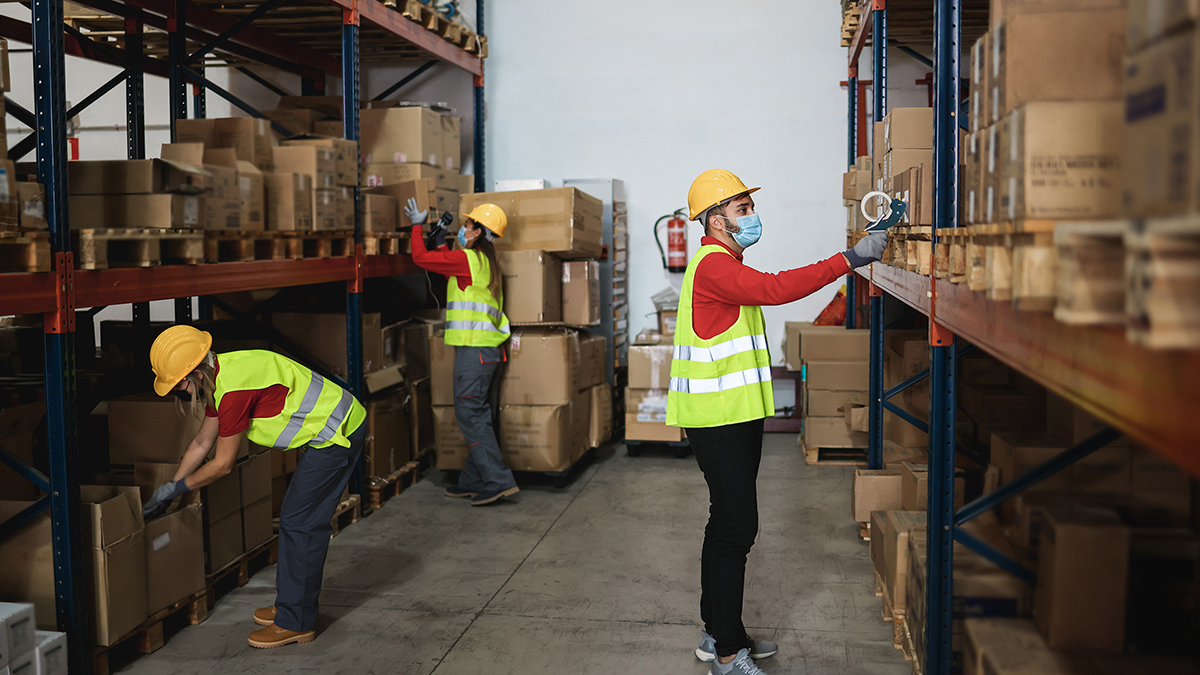Supply chain challenges and heightened uncertainty: How can the WTO help?
Firms have always had to manage threats to their domestic and international supply chains. Natural disasters, technical failures, wars, civil unrest, financial and macroeconomic hazards and more, have imperiled their operation at various times. But the pandemic highlighted the reality that risks have become more frequent and intense, and that they are likely to increase in the future as new variants, climate change events, cyber threats, and geopolitical tensions intensify. The war in Ukraine is a humanitarian disaster; it is also a major blow to supply networks, its full magnitude still unknown.
While not new, disruption is increasingly becoming the new norm, as highlighted in the World Trade Organization (WTO) Global Supply Chain Forum held on 21 March 2022. A central message delivered by Director General Dr. Ngozi Okonjo-Iweala is that withdrawal from trade is not the answer. Instead, trade policies and the WTO can help firms build resilience, manage disruptions, and withstand an uncertain future. Digitalization, backed by international co-operation, is also an important part of the answer.

Changes in consumer preferences and disruptions on the ground
The latest supply chain crunch was triggered by a surge in demand for goods during the pandemic, as consumer spending, bolstered by economic stimulus, shifted from services to goods. The health crisis first caused a collapse in economic activity across the board, and world trade in goods fell precipitously, as did tourism and transport services. But the recovery was V-shaped, and when it came, the demand for goods soared, while that for services took longer to materialize. This happened first in the United States, where imported shipping containers increased by more than 17% between 2020 and 2021, and later in other advanced economies.
Supply is expected to keep struggling for a while, especially because many companies have moved away from ‘just in time’ and other lean strategies to ‘just in case’ approaches that seek to strengthen security in their supply chains, which has resulted in additional buying to build up inventories. But consumer behavior had already been changing before COVID-19 hit. Rapid e-commerce growth in the last decade, which had already reached $26 trillion in 2018, has increasingly put pressure on trade networks. In the words of one speaker in the WTO forum, the world's supply chain infrastructure had not been built for a world where consumers “want everything right now”.
Supply chain bottlenecks are found both at sea and on land and have ripple effects. Hinterland transport logjams, including overwhelmed ports and shortage of port workers, trucking, chassis, and warehousing space, have held up a large amount of shipping capacity. Ocean carriers are ramping up investment in new capacity, while pursuing digitalization and vertical integration strategies through the acquisition of terminals, creation of air freight divisions, and development of logistics businesses. However, it takes a couple of years to get big ships delivered and even more to build the landside infrastructure to support them. It will also take some time to clear up hinterland transport logjams.
The war in Ukraine has magnified supply chain challenges and heightened uncertainty, with significant knock-on trade impacts extending well beyond the countries directly in conflict. Reduced shipping connectivity, higher energy prices, and potential scarcity of grains, fertilizers and other critical supplies are among the factors that will further exacerbate current difficulties. The duration and outcome of the confrontation will determine whether present disruptions will morph into more profound fragmentation of supply chains.
Distributional impacts: disproportionately hitting the smallest and those with least-market power
The supply chain crunch, and the responses to it, have exacerbated existing tensions in transport and logistics networks, with concern mounting about repercussions on competition. High concentration in the global shipping industry, the expansion of ocean carriers into services beyond port-to-port activities, and special treatment granted to some customers through long term contracts, with guaranteed slots and fixed rates, were among the many concerns raised at the forum. The survival of freight forwarders, logistics companies and shippers in developing countries could be at risk, while small firms continue to confront sky-high freight rates.
To adapt to supply chain disruptions, large companies are reassessing supply strategies and considering ways to mitigate the negative impacts, including by looking for alternative low-cost production countries, expanding inventories, booking early capacity with factories, signing long-term contracts with logistics players and reengineering product design and supply chain processes. For many small and medium companies, however, the challenges are greater, as they have been hit particularly hard by the pandemic and the subsequent disruption. From cancellations to changes in payment terms, from unavailability of containers to port delays, many small firms in both advanced and developing economies suffered significant duress on top of pre-existing operational inefficiencies in ports, fragile infrastructure, and disruptive communications. Firms in land-locked developing countries face even tougher conditions.
In addition to impacting trade, supply chain disruptions, including the surge of shipping rates, are contributing to inflation in the United States and elsewhere. Participants in the forum noted that the global inflation outlook depends partly on the response of businesses to current price signals. Capital investments would foster productivity and create a supply side push which might lessen inflationary pressures and stimulate economic growth. The role of domestic policies in taming inflation was also emphasized, as was the need to foster competition in product markets and tackling problems in domestic supply chains.
WTO to help withstand disruptions and prepare for an uncertain future
One effect of supply chain troubles is to strengthen the hand of those who believe, or who could profit, from domestic preferences and reduced reliance on foreign sources of supply even when those are cheaper or of higher quality. As things move in this direction in some sectors, participants in the forum expressed concern about self-defeating trade protectionism, calling instead for greater emphasis on digitalization and trade cooperation in supporting diversification and resilience of supply networks.
During the pandemic, many governments embraced digital solutions to enable contactless interactions and reduce the risk of COVID transmission. Building on these initiatives, the deployment of automation and digital technologies could increase efficiency and strengthen supply chains. Greater collaboration in building a common digital infrastructure that can be used by both border agencies and private operators could help facilitate the sharing of real-time data along supply networks. Machine learning can help optimize operations along the supply chain and improve risk management. As one speaker put it, “visibility can help address volatility”.
Current uncertainty and instability should not detract from the pursuit of net-zero emissions goals, in the view of many participants. Sensible policies are needed to keep the costs of decarbonization for air and maritime transport manageable. Some speakers noted that decarbonization initiatives would add to the cost of moving goods across borders and would require fundamental changes in product design, production processes and logistics. Another point made is that reducing commerce was not the solution to decarbonize supply chains, highlighting the role of trade in a low-carbon economy.
The WTO, working with member governments, can play a greater role in addressing supply chain challenges by bringing relevant actors together, help build trust and provide leadership to discuss supply chain challenges and solutions. The WTO, working in collaboration with other international organizations such as the World Bank, can help signal emerging trends and new challenges to governments, based on enhanced data collection, monitoring and transparency, and timely engagement with the private sector. WTO rules, including full implementation of the Trade Facilitation Agreement, new disciplines on digital trade and reduced recourse to export bans can help on the ground, while progressive reduction of trade barriers, including in key services sectors, and enhanced regulatory convergence and standardization could also ease trade bottlenecks and equip supply chains for a more risky and uncertain future.
* Anabel González was Deputy Director-General from June 2021 to August 2023
